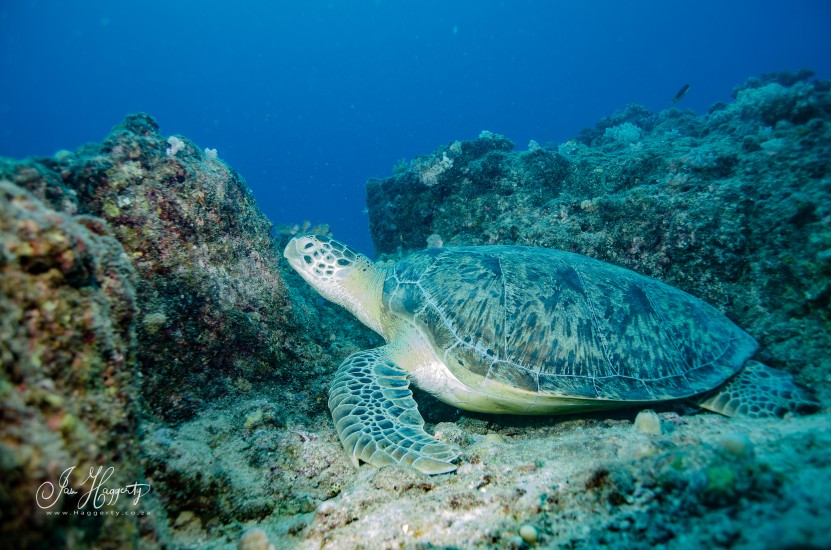#Touching Turtles

We can differentiate between turtles by the patterns formed on their heads and necks.
4 years ago we published a video of the little Hawksbill turtle in the video. He was plump with a pristine carapace shell and was so friendly he tried to get into my Gopro. He thought my Gopro was his mother.
Yesterday we filmed the same area, and he was there again, but his shell is no longer plump and healthy. He has algae growing on his fins, and his plates have clear patches of vigorously growing barnacles. He had been held on a published video by a tourist, who thought she was loving it. But she was in fact loving it to death.
Turtles are coated with a bioprotective wax. If we touch them the wax is removed. Fungus grows on the exposed areas. It lifts the shell and barnacles grow making it very heavy. The turtle can no longer go to the surface to breathe. It drowns. https://youtu.be/XiXZf_KTGmM
There are many posts on Facebook about swimming with turtles, and many pictures showing people who profess to love them holding their shells or even riding on their backs. Google is full of warnings to humans about the dangers of touching turtles. Salmonella poisoning, gastric diseases, infections- but what about the dangers to the turtles?
We read very little about the dangers to the turtles themselves of human contact. The PADI rule about TOUCH NOTHING TAKE NOTHING LEAVE NOTHING are there to protect marine animals against human interference. In Mauritius, we have the Green Turtle and the Hawksbill Turtle. The latter is on the Red Data base as endangered. In Mauritius EPCO protects and monitors turtles, so Mauritius is making a great start.



